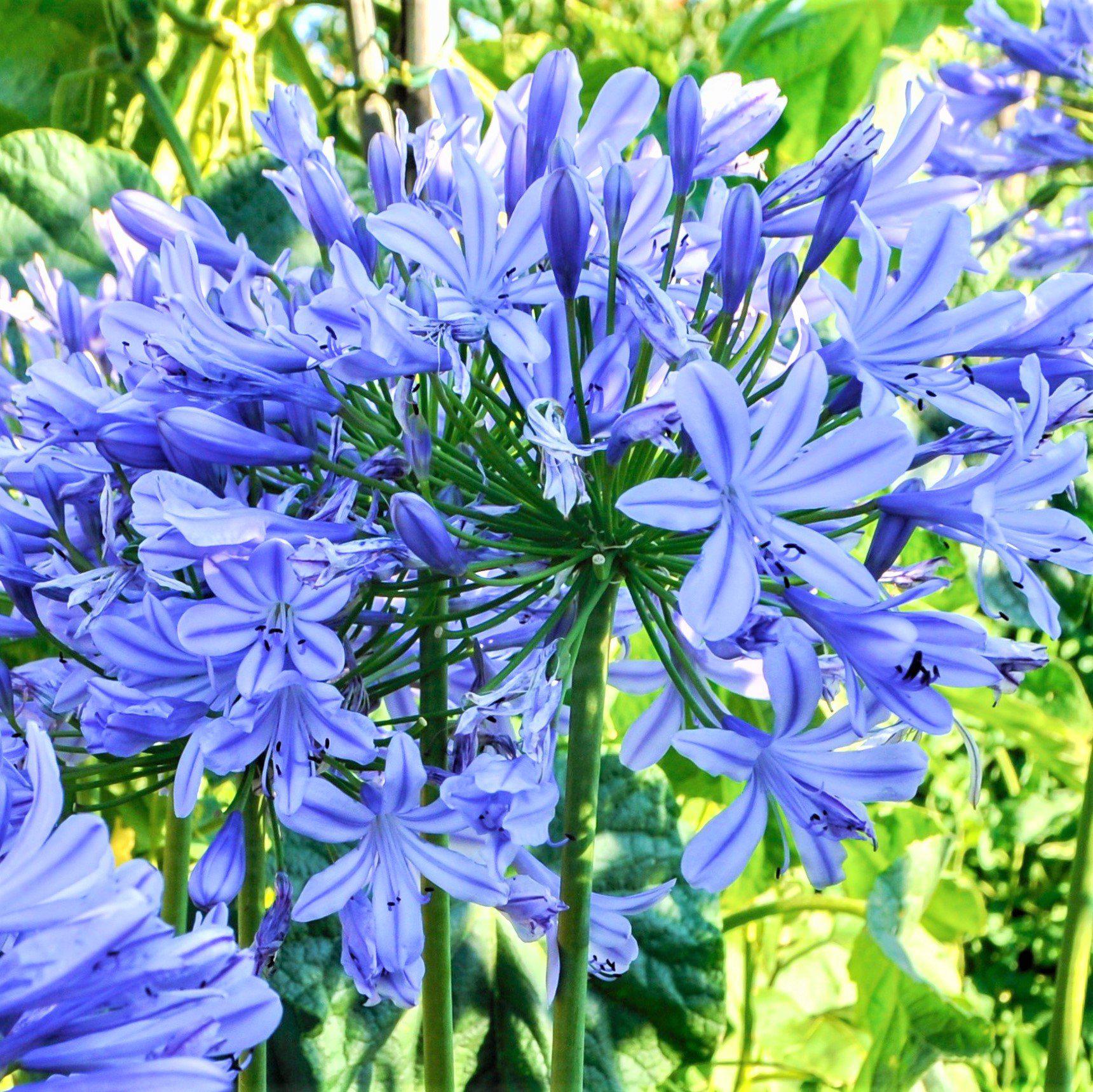Agapanthus Varieties: Selecting the most effective for Your Landscape
Agapanthus Varieties: Selecting the most effective for Your Landscape
Blog Article
Understanding the Art of Agapanthus Treatment: Crucial Actions for Healthy And Balanced Development and Vibrant Blossoms
In the realm of gardening, the growing of agapanthus stands as a satisfying undertaking for those who seek to support these sophisticated flowering plants. From selecting the appropriate variety to mastering trimming techniques, the journey in the direction of growing thriving agapanthus plants is diverse and holds the essential to opening the complete possibility of these herb gems.

Picking the Right Agapanthus Variety

When selecting the right Agapanthus range for your garden, think about variables such as environment suitability, blossom shade, and growth routine. Additionally, consider the climate in your area to guarantee the Agapanthus range you select can flourish in your details problems. Recognizing the growth habit of various Agapanthus ranges is important for appropriate placement within your garden.
Perfect Planting Problems
Thinking about the optimum environmental requirements is vital for effective Agapanthus farming. Agapanthus grows in well-draining soil with a somewhat acidic to neutral pH level. When growing, choose a place that receives complete sunshine to partial shade. In hotter climates, offering some mid-day shade can prevent scorching of the fallen leaves. Agapanthus plants are delicate to cool temperatures and should be shielded from frost throughout winter season.
To guarantee healthy and balanced development and vivid blooms, plant Agapanthus light bulbs at a deepness of concerning 2-4 inches and room them 8-12 inches apart. Adding organic issue, such as compost, to the soil can boost drain and fertility, advertising robust root growth. Mulching around the base of the plants helps retain wetness and suppresses weed development. Routine watering is important, specifically during the expanding period, to keep the dirt regularly wet but not saturated.
Watering and Feeding Tips
Maintaining correct moisture degrees and providing important nutrients are crucial components in the care regimen for Agapanthus plants. When it involves watering Agapanthus, it is critical to strike an equilibrium. These plants choose constantly wet dirt yet are at risk to root rot if overwatered. During the expanding period, water deeply as soon as a week, guaranteeing the soil is well-draining to stop waterlogging. In hotter climates or during periods of drought, even more constant watering may be needed to maintain the dirt evenly damp. Nevertheless, lower watering in the wintertime to avoid waterlogged problems.
Feeding Agapanthus is essential for advertising healthy growth and prolific blooms. Use a well balanced fertilizer, such as a 10-10-10 formula, in the very early spring as new development arises. Repeat this application every 6-8 weeks throughout the expanding period. Avoid excessive fertilization, as it can cause lavish vegetation at the expenditure of blooms. Constantly adhere to the producer's guidelines for proper dilution and application approaches. By complying with these watering and fertilizing tips, you can ensure your Agapanthus plants grow and create vivid, resilient blooms.
Trimming Methods for Agapanthus
Trimming Agapanthus plants at the appropriate times and with correct strategies is crucial for preserving their wellness and promoting optimum development and blooming. The optimal time to trim Agapanthus remains in late winter or early springtime prior to brand-new development emerges. Start by getting rid of any type of dead or yellowing leaves near the base of the plant. Cut them as close to the ground as feasible without harming the emerging shoots.
Deadheading invested blossoms can also reroute the plant's power right into creating more blossoms rather than establishing seeds. If you desire to collect seeds for proliferation, leave some blossoms to dry and fully grown on the plant.
Keep in mind to use tidy, sharp tools to make accurate cuts and lower the risk of introducing illness. Agapanthus. Normal pruning will certainly help keep your Agapanthus looking healthy and balanced and neat while guaranteeing a plentiful screen of lovely flowers
Handling Usual Parasites and Diseases
After making sure proper pruning techniques for Agapanthus, it is important to resolve common parasites and conditions that can impact the health and vitality of these plants. One usual insect that influences Agapanthus is the Agapanthus gall midge.
An additional usual problem is fungal fallen leave area, which presents as dark sores on the fallen leaves. To avoid fungal illness, ensure great air circulation around the plants, stay clear of overhanging watering, and get rid of i loved this any kind of contaminated fallen leaves quickly. In addition, Agapanthus plants can experience root rot if they are planted in improperly draining pipes soil. To stop this, plant Agapanthus in well-draining soil and avoid overwatering. By being alert and taking punctual activity against bugs and illness, you can aid your Agapanthus look at here plants grow and generate vivid blossoms.

Verdict
To conclude, mastering the art of agapanthus care involves choosing the best range, supplying excellent planting conditions, appropriate watering and fertilizing, ideal trimming techniques, and attending to common bugs and conditions. By following these essential steps, you can make certain healthy growth and dynamic blossoms for your agapanthus plants. Remember to regularly keep track of and maintain your plants to promote their overall well-being and durability.
To make certain healthy and balanced growth and dynamic blooms, plant Agapanthus bulbs at a deepness of regarding 2-4 inches and room them 8-12 inches apart. By complying with these watering and feeding ideas, you can guarantee your Agapanthus plants flourish and create lively, long-lasting flowers.
One typical insect that influences Agapanthus is the Agapanthus gall midget. Furthermore, Agapanthus plants can suffer from this root rot if they are grown in improperly draining pipes soil. By adhering to these vital actions, you can guarantee healthy and balanced growth and vivid blossoms for your agapanthus plants.
Report this page